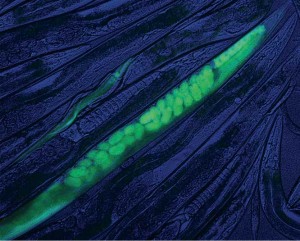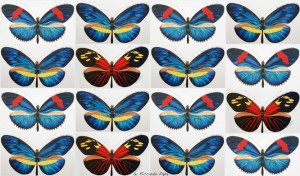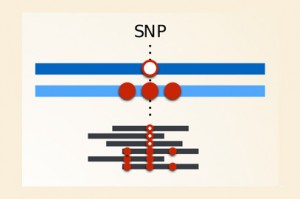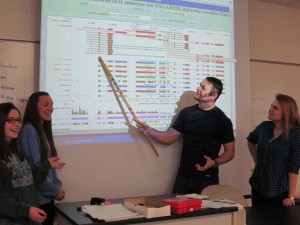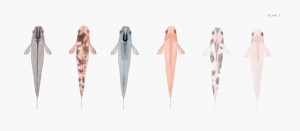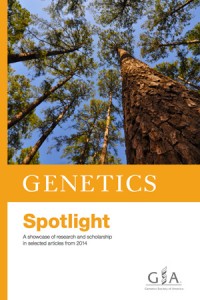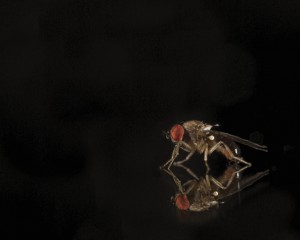Enter your address to receive notifications about new posts to your email.
Articles by Cristy Gelling (96 results)
-
Worm101: Caenorhabditis elegans educational Primer
In time for the 20th International C. elegans Meeting, GENETICS has published the next in its series of model organism education Primers. Ann Corsi, Bruce Wightman, and Marty Chalfie introduce Caenorhabditis elegans and the many features that make it an outstanding experimental system. The authors describe the basic biology, genetics, anatomy, genomics, ecology, and evolution…
-
Turning spit and data into treasure
By the time President Obama announced the Precision Medicine Initiative in January 2015, the Genetic Epidemiology Research on Adult Health and Aging (GERA) cohort was already a trailblazing example of this new approach to medical research. GERA is a group of more than 100,000 members of the Kaiser Permanente Medical Care Plan who consented to…
-
Thousands of BRCA1 variants tested by deep mutational scanning
Patients seeking certainty in genetic tests, such as tests for inherited susceptibility to cancer, often receive a perplexing result. Many people learn they carry a “variant of unknown significance” of a disease-linked gene. Such variants might—or equally might not—increase disease risk. In the latest issue of GENETICS, Starita et al. characterized nearly 2000 variants of…
-
The molecules behind mimicry
The vibrant passion-vine butterfly species Heliconius erato doesn’t taste as good as it looks. The flesh of this South and Central American species accumulates toxic compounds to discourage would-be predators, who quickly learn to associate the butterflies’ unpleasant taste with their bold red warning colors and patterns. But H. erato isn’t the only species that…
-
Cover contest: Immune Repertoires
In 2014, the GSA journals launched a contest inviting image submissions related to genetics and genomics. The winning entry was created by Jian Han, of the HudsonAlpha Institute for Biotechnology, and appears on the cover of the May 2015 issue of G3. We talked with Dr. Han about the striking image: What does the image…
-
The trouble with HLA diversity
The most diverse of all human genes encode a set of proteins at the frontline of our immune system. Many different Human Leukocyte Antigen (HLA) proteins are encoded by genes clumped together in one portion of the human genome known as the major histocompatibility complex region. HLA proteins sit on the surface of cells and…
-
Undergrads power genomics research
With 1014 authors, an article by Leung et al. in the May issue of G3 has the largest author list of any paper published in the journal. More than 900 of those authors were undergraduate students when they performed the research. Over several years, students at 63 higher education institutions across the US conducted an…
-
Medaka Genetic Toolbox: Old fish, new tricks
Since the 17th century, the tiny medaka fish that dart through rice paddies in Japan have been bred as living ornaments. Though in the wild they are a nondescript mud color, medaka occasionally turn up in flashier mutant varieties — orange-red, pearlescent white, black splotched — that were much prized by generations of fish fanciers.…
-
Forest forecasts
In 2009, after five years parching under the arid blue skies of Calcena in northeastern Spain, dozens of neat rows of maritime pine seedlings had grown unevenly. Some of the seedlings had died years ago, some were stunted but hanging on, while others grew tall and green. The trees were not in their native soil.…
-
Spotlight on 2014 research
From animal domestication to human genome variation, from loblolly genomes to lager genomes, from wild zebrafish sex to untangled metagenomes, last year brought plenty of high points for the GSA journals. So gathering a small selection of those high points into the 2014 Spotlight booklets was a challenging, but rewarding task for the editors of GENETICS…
-
Meeting report: Defending Drosophila
Fruit flies suffer from an image problem. Maybe it’s the alliteration in the name, or the association with bananas, but Drosophila have become a go-to target for politicians looking to ridicule wasteful public spending. In February, presidential candidate and US Senator Rand Paul (R-KY) questioned the NIH for spending: “…a million dollars trying to determine…

